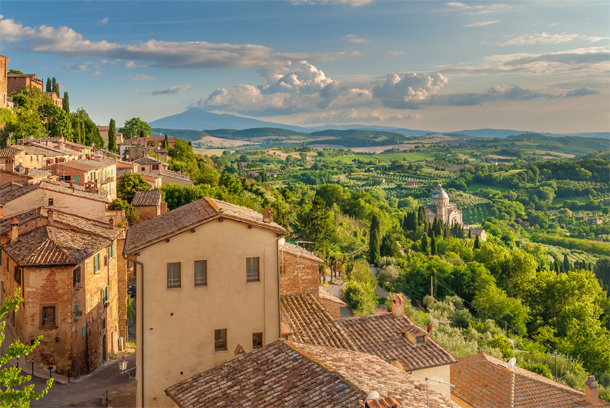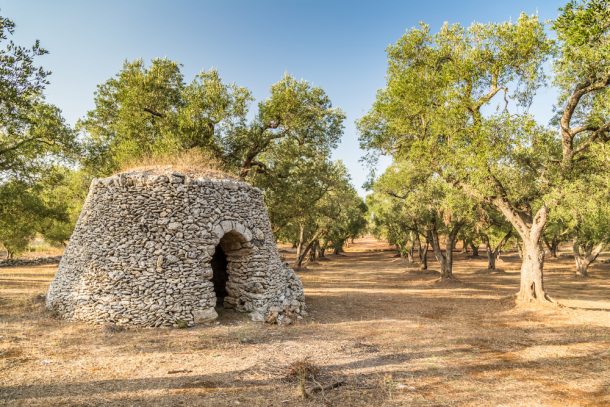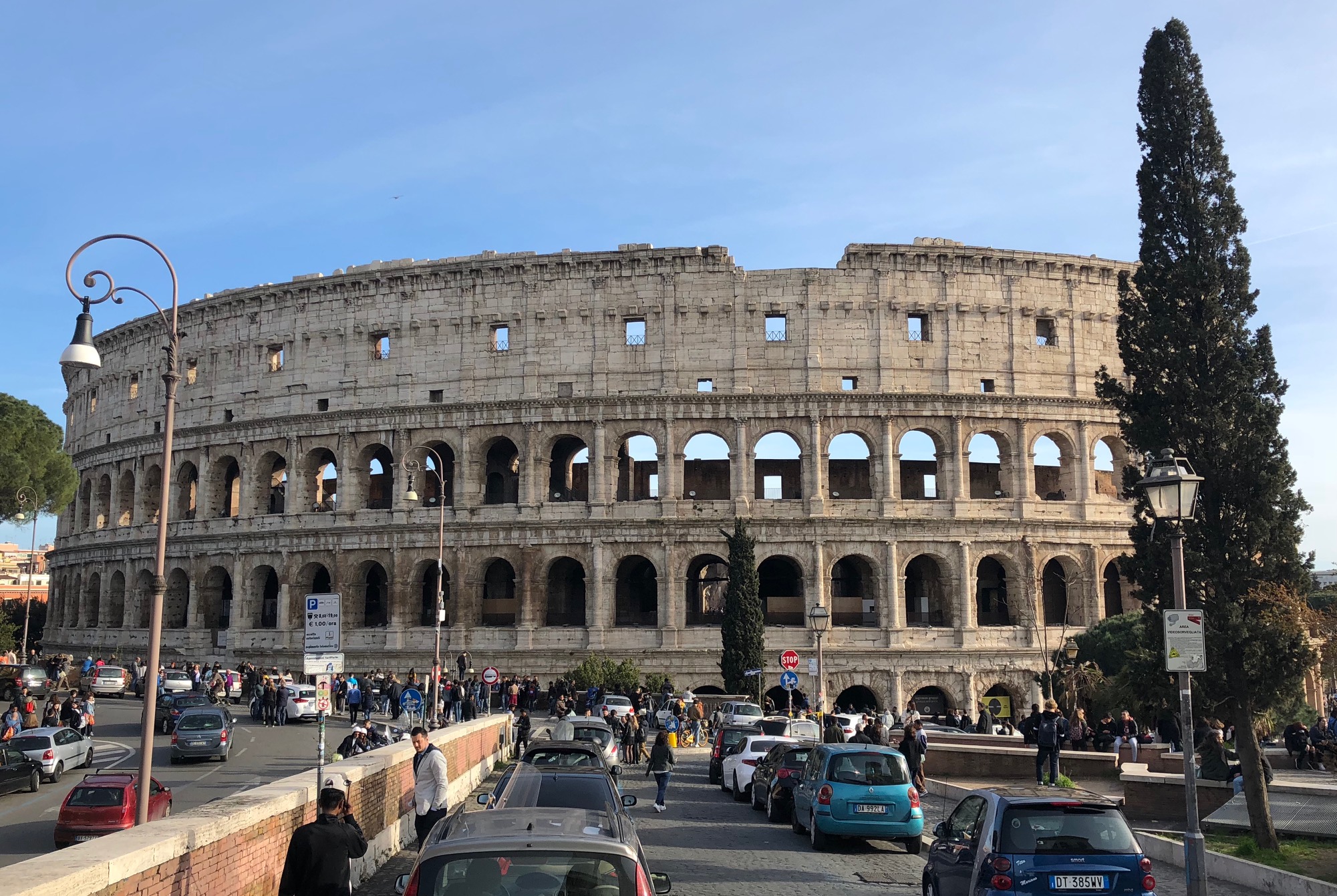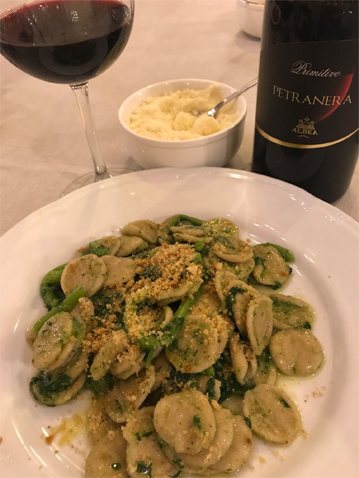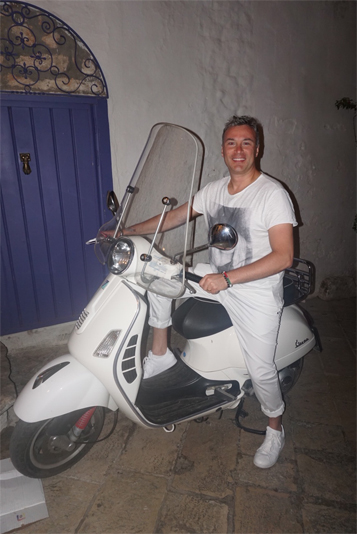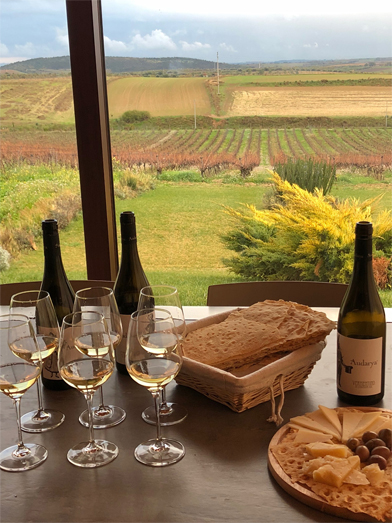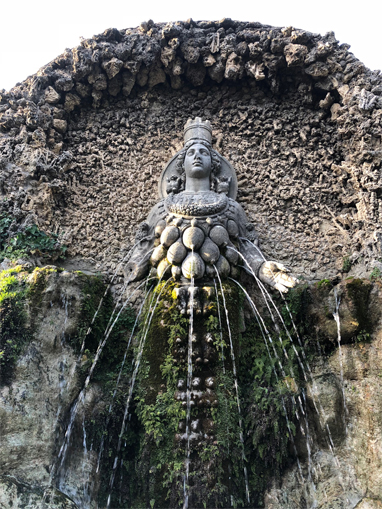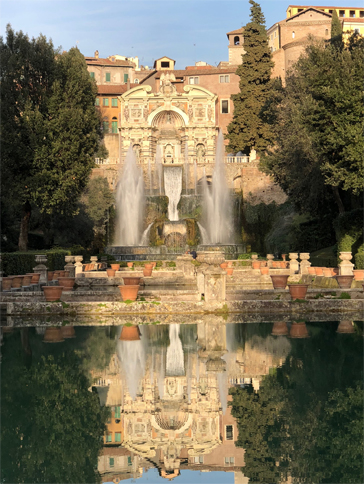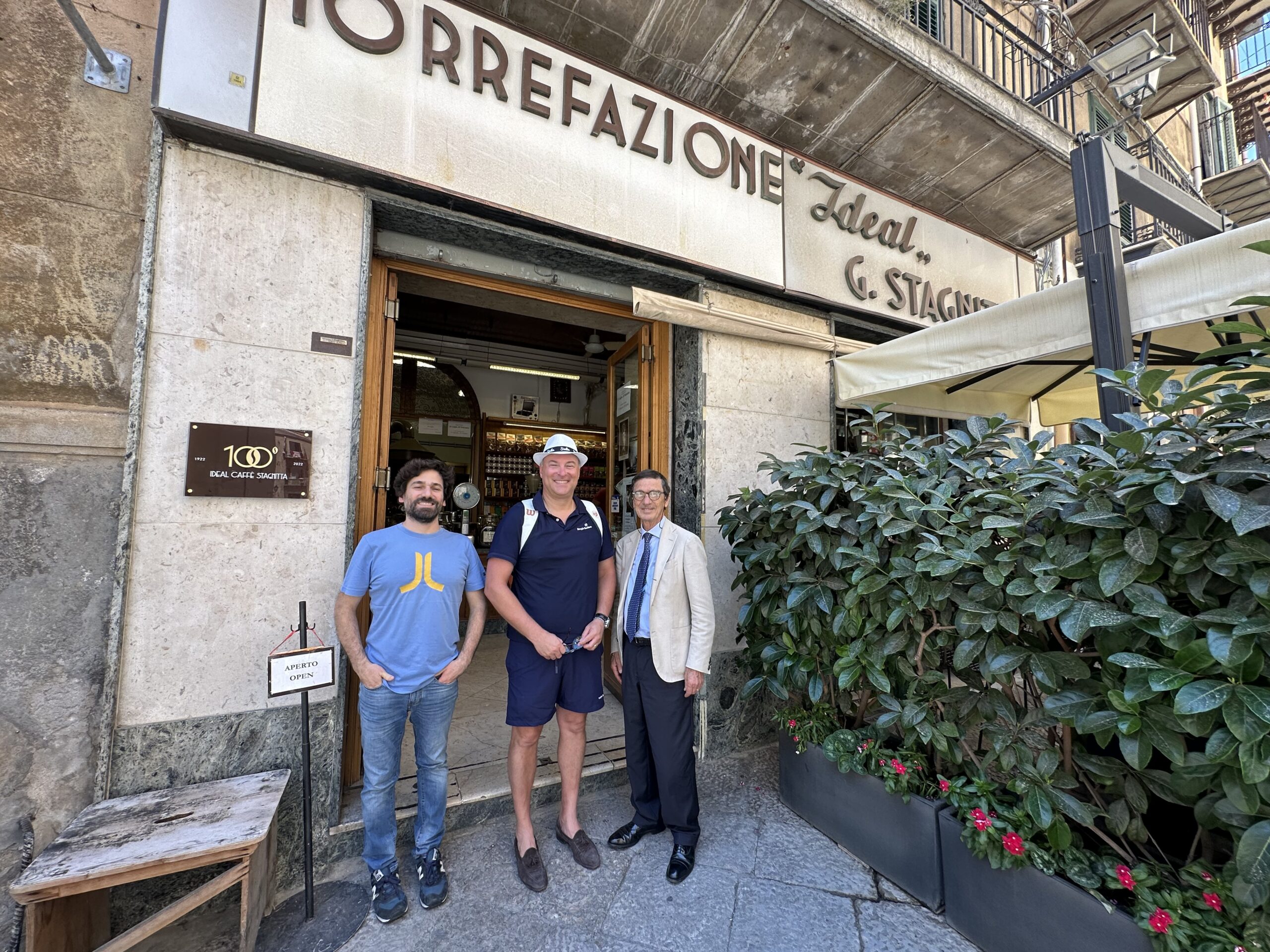-
 Travel like the Italian Enthusiast… because there is no better way to travel.
Travel like the Italian Enthusiast… because there is no better way to travel.
Tours
OUR UPCOMING TOUR PACKAGES
TASTE OF TUSCANY TOUR
October 1, 2020 – October 8, 2020
Trip Cost: $4,000.00 / person
(excluding flights)
- 7 nights of 4-Star hotel accommodations in Florence based on double occupancy
- 7 breakfasts, 4 lunches, and 5 dinners (wine is included at dinner)
- 1 traditional Tuscan Aperitivo
- Private guided tours of Florence, Pisa, Lucca, and Siena (including visit to the Siena Cathedral and the Leaning Tower of Pisa)
- Private guided tour through the Uffizi Gallery and tickets to the Accademia Gallery to see Michelangelo’s original David sculpture
- Visit to a Chianti winery and wine tasting
- Cooking class where you can learn to cook authentic Italian food
- Perfume making class in an ancient workshop where you can relive the magical atmosphere of alchemists and apothecaries residing in Florence during the Renaissance period
- English-speaking tour guides and instructors
- Transportation to and from scheduled destinations
- Small groups
SALENTO EASTER TOUR
March 30, 2021 – April 6, 2021
Trip Cost: $3,500.00 / person
(excluding flights)
- 7 nights of lodging at a traditional Masseria based on double occupancy
- 7 breakfasts, 5 lunches, and 6 dinners (wine is included at dinner)
- Private guided tours of Lecce, Otranto, Leuca and Galatina (as well as stops at some neighboring towns along the way)
- Visits to the cathedrals and main attractions of each toured city
- Visit to an olive farm to participate in the harvest, followed by olive oil tasting (if olive season in October), and if not, then visit to the beach and countryside.
- Excursions to learn about Greek influences in Salento dating back to the Roman period.
- Cooking class where you can learn to cook an authentic recipe from Salento
- Traditional southern Italy music and dance workshop where you can learn the history of Pizzica music and the Tarantella dance
- Transportation to and from scheduled destinations, including transportation from airport in Brindisi
- English-speaking tour guides and instructors
- Small groups
ROME / TIVOLI TOUR
November 1, 2020 – November 8, 2020
Trip Cost: $4,200.00 / person
(excluding flights)
- 7 nights of 4-Star hotel accommodations in Rome and Tivoli based on double occupancy
- 7 breakfasts, 4 lunches, and 5 dinners (wine is included at dinner)
- 1 openair apericena in Rome
- Visit of monumental Rome to discover the spectacular squares and monuments, including Fontana di Trevi, Piazza di Spagna, Piazza Navona, and Campo dei Fiori with its colorful market
- Night tours to discover the magic light of Rome, including Campidoglio, Gianicolo and Trastevere
- 3 days in Tivoli to visit Villa d’Este, Villa Adriana and Villa Gregoriana, including private tours
- Private concert during dinner in Tivoli, performed by members of the Tivoli orchestra
- 1 day in the organic farm of the fashion designer, Fendi, to enjoy food and atmosphere
- 1 culinary class, learning to make traditional Pizza Napoletana
- Lunch and dinners in selected restaurants
- English-speaking tour guides and instructors
- Transportation to and from scheduled destinations
- Free time
- Small groups
TASTE OF TUSCANY TOUR
January 3, 2021 – January 10, 2021
Trip Cost: $4,000.00 / person
(excluding flights)
- 7 nights of 4-Star hotel accommodations in Florence based on double occupancy
- 7 breakfasts, 4 lunches, and 5 dinners (wine is included at dinner)
- 1 traditional Tuscan Aperitivo
- Private guided tours of Florence, Pisa, Lucca, and Siena (including visit to the Siena Cathedral and the Leaning Tower of Pisa)
- Private guided tour through the Uffizi Gallery and tickets to the Accademia Gallery to see Michelangelo’s original David sculpture
- Visit to a Chianti winery and wine tasting
- Cooking class where you can learn to cook authentic Italian food
- Perfume making class in an ancient workshop where you can relive the magical atmosphere of alchemists and apothecaries residing in Florence during the Renaissance period
- English-speaking tour guides and instructors
- Transportation to and from scheduled destinations
- Small groups
OUR UPCOMING TOUR PACKAGES
TASTE OF TUSCANY TOUR
October 1, 2020 – October 8, 2020
Trip Cost: $4,000.00 / person
(excluding flights)
- 7 nights of 4-Star hotel accommodations based on double occupancy
- 7 breakfasts, 4 lunches, and 5 dinners (wine is included at dinner)
- 1 traditional Tuscan Aperitivo
- Private guided tours of Florence, Pisa, Lucca, and Siena (including visit to the Siena Cathedral and the Leaning Tower of Pisa)
- Private guided tour through the Uffizi Gallery and tickets to the Accademia Gallery to see Michelangelo’s original David sculpture
- Visit to a Chianti winery and wine tasting
- Cooking class where you can learn to cook authentic Italian food
- Perfume making class in an ancient workshop where you can relive the magical atmosphere of alchemists and apothecaries residing in Florence during the Renaissance period
- English-speaking tour guides and instructors
- Transportation to and from scheduled destinations
- Small groups
SALENTO EASTER TOUR
March 20, 2021 – April 6, 2021
Trip Cost: $3,500.00 / person
(excluding flights)
- 7 nights of lodging at a traditional Masseria based on double occupancy
- 7 breakfasts, 5 lunches, and 6 dinners (wine is included at dinner)
- Private guided tours of Lecce, Otranto, Leuca and Galatina (as well as stops at some neighboring towns along the way)
- Visits to the cathedrals and main attractions of each toured city
- Visit to an olive farm to participate in the harvest, followed by olive oil tasting (if olive season in October), and if not, then visit to the beach and countryside.
- Excursions to learn about Greek influences in Salento dating back to the Roman period.
- Cooking class where you can learn to cook an authentic recipe from Salento
- Traditional southern Italy music and dance workshop where you can learn the history of Pizzica music and the Tarantella dance
- Transportation to and from scheduled destinations, including transportation from airport in Brindisi
- English-speaking tour guides and instructors
- Small groups
ROME / TIVOLI TOUR
November 1, 2020 – November 8, 2020
Trip Cost: $4,200.00 / person
(excluding flights)
- 7 nights of 4-Star hotel accommodations in Rome and Tivoli based on double occupancy
- 7 breakfasts, 4 lunches, and 5 dinners (wine is included at dinner)
- 1 openair apericena in Rome
- Visit of monumental Rome to discover the spectacular squares and monuments, including Fontana di Trevi, Piazza di Spagna, Piazza Navona, and Campo dei Fiori with its colorful market
- Night tours to discover the magic light of Rome, including Campidoglio, Gianicolo and Trastevere
- 3 days in Tivoli to visit Villa d’Este, Villa Adriana and Villa Gregoriana, including private tours
- Private concert during dinner in Tivoli, performed by members of the Tivoli orchestra
- 1 day in the organic farm of the fashion designer, Fendi, to enjoy food and atmosphere
- 1 culinary class, learning to make traditional Pizza Napoletana
- Lunch and dinners in selected restaurants
- English-speaking tour guides and instructors
- Transportation to and from scheduled destinations
- Free time
- Small groups
TASTE OF TUSCANY TOUR
January 3, 2021 – January 10, 2021
Trip Cost: $4,000.00 / person
(excluding flights)
- 7 nights of 4-Star hotel accommodations in Florence based on double occupancy
- 7 breakfasts, 4 lunches, and 5 dinners (wine is included at dinner)
- 1 traditional Tuscan Aperitivo
- Private guided tours of Florence, Pisa, Lucca, and Siena (including visit to the Siena Cathedral and the Leaning Tower of Pisa)
- Private guided tour through the Uffizi Gallery and tickets to the Accademia Gallery to see Michelangelo’s original David sculpture
- Visit to a Chianti winery and wine tasting
- Cooking class where you can learn to cook authentic Italian food
- Perfume making class in an ancient workshop where you can relive the magical atmosphere of alchemists and apothecaries residing in Florence during the Renaissance period
- English-speaking tour guides and instructors
- Transportation to and from scheduled destinations
- Small groups
WHY CHOOSE ITALIAN ENTHUSIAST TOURS
Welcome to Italian Enthusiast Tours. For me, Italian travels are a lifelong passion. I have ventured to Italy countless times on the strength of sheer enthusiasm for the country. My travels have not only enhanced my passion for the cuisine, culture, and history of Italy, but have also secured lifelong relationships with Italians across its twenty regions. As a blogger, I have shared my experiences in Italy with the world through videos, pictures and written narratives, all of which have been received with remarkable interest.
In addition to blogging, my goal is to share my enthusiasm for Italy with other people in actual experience. The itinerary of an Italian Enthusiast Tour is born out of my personal journeys to Italy. All stops – whether it is a restaurant or a historical site – have been directly experienced by me. As a travel management company, we are uniquely poised to help other travelers be the beneficiaries of the knowledge of Italy that has been acquired firsthand. I hope to serve as a conduit between the curious traveler and a genuine, unique and enthusiastic Italian experience.
Italian Enthusiast Tours offers a uniquely personalized, immersive experience in Italy. Passion and personality are what separates Italian Enthusiast Tours from other similar travel companies. Traveling with Italian Enthusiast Tours is akin to traveling with a trusted friend. An Italian Enthusiast Tour is a shared experience fueled by a deep love for Italy, and when enthusiastic people join with a common interest, the pleasure derived from the experience is tenfold.
I look forward to embarking on an Italian journey with you, and creating everlasting memories on some of the most fulfilling itineraries I have ever experienced in Italy! I am confident that our itineraries will inspire you, just as they have inspired me.
-Anthony (The Italian Enthusiast)
Fla. Seller of Travel Ref. No. ST41354
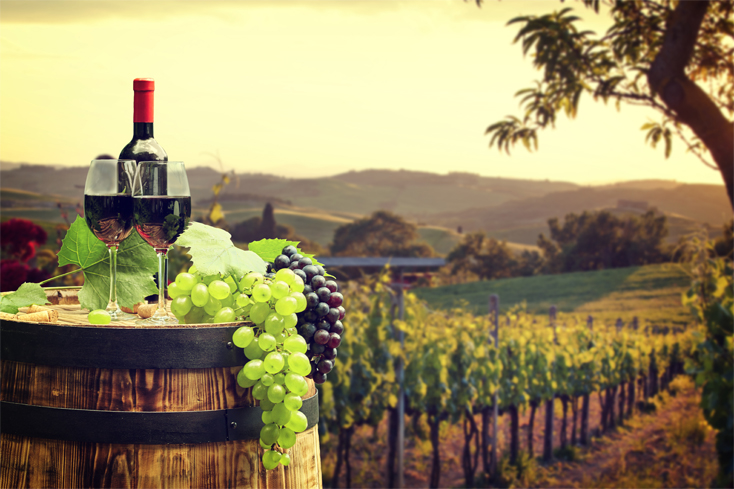
PHOTOS FROM OUR RECENT TOURS
REVIEW
RECENT POSTS
See the Recent Posts from the Italian Enthusiast Blog
- All
- Food & Wine
- Sicilia
- Travel

